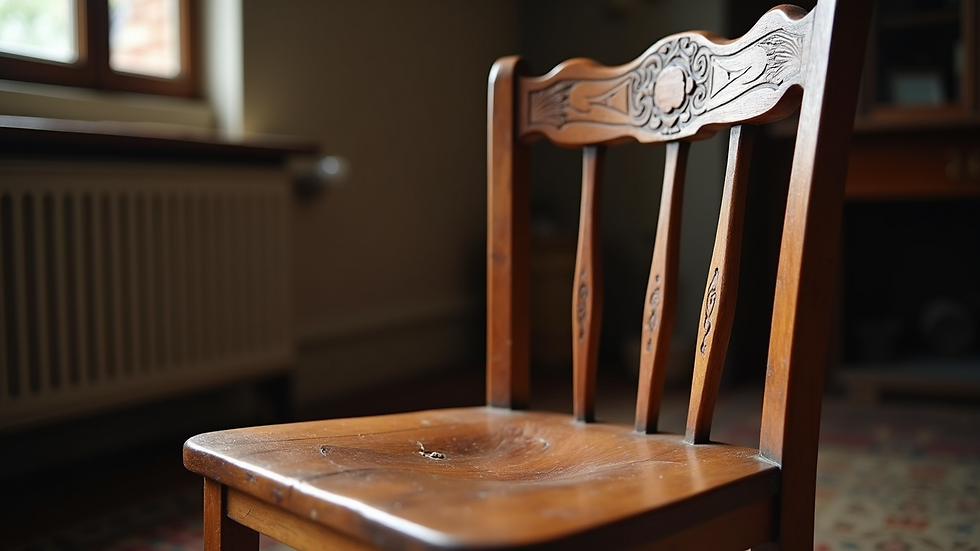Explore Vintage Restoration Tips at Mindy's Vintage Blog
- Mindy Petersen
- Aug 3
- 5 min read
Vintage items hold a special charm. They tell stories of the past and bring a unique character to our homes. However, many vintage pieces need a little love and care to shine again. Whether you have an old piece of furniture, a classic car, or vintage clothing, restoration can breathe new life into these treasures. In this blog post, we will explore practical tips for restoring vintage items, ensuring they remain beautiful and functional for years to come.
Understanding the Value of Vintage Restoration
Restoring vintage items is not just about aesthetics. It is also about preserving history. Each piece has a story, and by restoring it, you help keep that story alive.
When you restore a vintage item, you also increase its value. A well-restored piece can fetch a higher price than one that is left in disrepair. This is especially true for furniture and collectibles.
Moreover, restoring vintage items is a sustainable choice. Instead of buying new, you are giving a second life to something that already exists. This practice reduces waste and is better for the environment.
Assessing the Condition of Your Vintage Item
Before diving into restoration, it is crucial to assess the condition of your vintage item. Here are some steps to follow:
Examine the Item: Look for any damage, such as scratches, dents, or tears. Take note of these issues as they will guide your restoration process.
Check for Missing Parts: If you are restoring furniture, check for missing hardware or pieces. For clothing, look for missing buttons or zippers.
Identify the Material: Understanding the material is essential. Different materials require different restoration techniques. For example, wood, metal, and fabric all have unique needs.
Research the Item: Knowing the history and value of your vintage item can help you make informed decisions during restoration. Look for similar items online to gauge their condition and value.
Cleaning Your Vintage Item
Cleaning is often the first step in restoration. Here are some tips for cleaning various types of vintage items:
Furniture: Use a soft cloth and a gentle cleaner. Avoid harsh chemicals that can damage the finish. For wood, consider using a mixture of vinegar and water for a natural cleaner.
Clothing: Check the care label first. Hand washing is often the safest method for vintage fabrics. Use mild detergent and avoid bleach.
Metal Items: For metal, a mixture of baking soda and water can work wonders. Apply it with a soft cloth and rinse thoroughly.
Glass: Use a glass cleaner or a vinegar-water solution. A microfiber cloth can help avoid streaks.
Repairing Damages
Once your item is clean, it is time to address any damages. Here are some common repairs you might encounter:
Furniture Scratches: For minor scratches on wood, use a furniture touch-up marker. For deeper scratches, consider using wood filler.
Clothing Tears: Small tears can often be sewn by hand. For larger rips, consider patching or using fabric glue.
Metal Dents: For small dents in metal, you can often push them out from behind. For larger dents, you may need to consult a professional.
Glass Chips: Small chips can sometimes be filled with clear nail polish. For larger breaks, consider replacing the glass.
Refinishing and Painting
Refinishing or painting can dramatically change the look of your vintage item. Here are some tips to consider:
Furniture: If you are refinishing wood furniture, start by sanding it down to remove the old finish. Then, apply a new stain or sealant. If you prefer paint, choose a high-quality furniture paint for durability.
Metal: For metal items, use a primer before painting. This helps the paint adhere better and prevents rust.
Clothing: If you want to change the color of vintage clothing, consider fabric dye. Always test on a small area first to ensure the color is what you want.
Preserving Your Vintage Item
After restoration, it is essential to preserve your vintage item properly. Here are some tips:
Store Properly: Keep vintage clothing in a cool, dry place. Use padded hangers to maintain their shape. For furniture, avoid direct sunlight to prevent fading.
Regular Maintenance: Clean and check your vintage items regularly. This helps catch any issues before they become significant problems.
Use Protective Coatings: For furniture, consider using a protective wax or sealant. This can help prevent scratches and damage.
Finding the Right Tools and Materials
Having the right tools and materials can make a significant difference in your restoration project. Here are some essentials to consider:
Basic Tools: A screwdriver, hammer, and pliers are must-haves for furniture restoration. For clothing, a sewing kit is essential.
Cleaning Supplies: Invest in gentle cleaners, microfiber cloths, and brushes for detailed cleaning.
Repair Materials: Wood filler, fabric glue, and touch-up markers are handy for repairs.
Finishing Products: Look for high-quality paints, stains, and sealants to ensure a professional finish.
Seeking Professional Help
Sometimes, a restoration project may be beyond your skill level. In such cases, seeking professional help can be a wise choice. Here are some signs that you should consider hiring a professional:
Extensive Damage: If your item has significant damage, a professional can assess and repair it more effectively.
Complex Repairs: Some repairs, like reupholstering furniture, require specialized skills.
Value Preservation: If your vintage item is valuable, a professional restoration can help maintain its worth.
Sharing Your Vintage Restoration Journey
Once you have completed your restoration project, consider sharing your journey. This can inspire others and create a community of vintage lovers. Here are some ways to share:
Social Media: Post before-and-after photos on platforms like Instagram or Facebook. Use relevant hashtags to reach a broader audience.
Blogs and Forums: Write about your experience on a blog or join vintage restoration forums. Sharing tips and tricks can help others in their restoration efforts.
Local Events: Participate in local vintage fairs or markets. Showcasing your restored items can connect you with like-minded individuals.
The Joy of Vintage Restoration
Restoring vintage items is a rewarding experience. It allows you to connect with history while creating something beautiful. Each project teaches you new skills and brings a sense of accomplishment.
As you embark on your restoration journey, remember to be patient. Some projects may take time, but the results are worth it.
Whether you are restoring furniture, clothing, or collectibles, the joy of bringing a vintage piece back to life is unmatched. So gather your tools, roll up your sleeves, and start your vintage restoration adventure today.

Embrace the charm of vintage restoration and let your creativity shine. Each piece you restore is not just an item; it is a piece of history that you are preserving for future generations. Happy restoring!


Comments